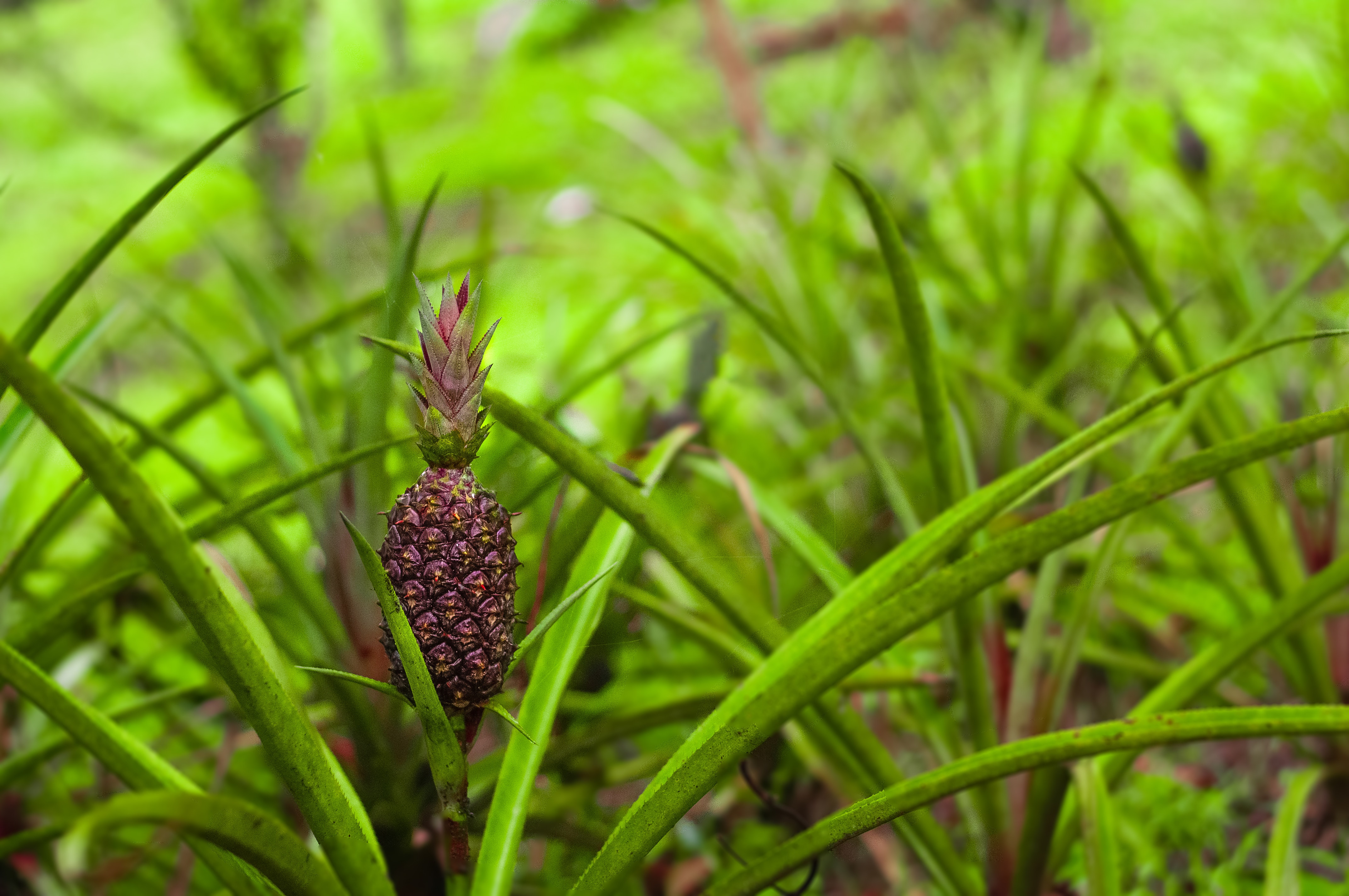Pineapple Variety Selection

This post is also available in:
This post is also available in:
![]() Español (Spanish)
Español (Spanish) ![]() Français (French)
Français (French) ![]() Deutsch (German)
Deutsch (German) ![]() हिन्दी (Hindi)
हिन्दी (Hindi) ![]() العربية (Arabic)
العربية (Arabic) ![]() Türkçe (Turkish)
Türkçe (Turkish) ![]() 简体中文 (Chinese (Simplified))
简体中文 (Chinese (Simplified)) ![]() Português (Portuguese (Brazil))
Português (Portuguese (Brazil)) ![]() polski (Polish)
polski (Polish)
Which are the most popular pineapple varieties globally?
There are numerous types and options available worldwide; however, for practical reasons, emphasis has been given to the most important varieties for international business and trading. Below, we are mentioning some of the most commercially significant varieties:
1.Smooth Cayenne
Smooth Cayenne or Cayena Lisa in Spanish (also called Sarawak, Giant Kew, Hilo, Claire, Esmeralda) was picked and cultivated by Indians in Venezuela long ago and imported from Cayenne (French Guyana) in 1820 (1). This variety is the most cultivated worldwide (2) and accounts for more than 70% of all pineapple farms for canning and fresh fruit around the globe.
- The plant grows to a height of 1.20 meters (4 feet) and produces a cylindrical fruit of around 4-10 pounds (1.8–4.5 kg).
- Its popularity constantly grows worldwide even though it is susceptible to disease and does not ship well. It is mainly favored for canning since it has enough fiber for hard slices and cubes and an outstanding taste.
- The typical acid range is 0.5 to 1.0%, while the total soluble solids (TSS) range is 12° to 16° Brix.
- Smooth Cayenne has a longer production cycle than most other cultivars. This considers one of the disadvantages of the variety.
- They are susceptible to a wide range of pests and diseases, including fruit borers, mites, symphillids, and nematodes, as well as internal browning. They are, however, resistant to Phytophthora spp. and to fruit collapse induced by Erwinia chrysanthemi Burkbolder.
2.MD-2
Del Monte made this cultivar and launched it on the market in 1997. The MD-2 pineapple was first grown commercially in Central and South American countries in 1996. It now makes up 50–55 % of the global market for fresh pineapple and 70–75 % of the market in Europe. Sweetness-wise, MD2 is considered superior to the other varieties (3). and prevails in the global market due to its color (gold), taste, shape, and ability to last. For example, ripe fruit has a high Brix value (17° Brix) and low acidity (0.4-0.45%).
- The fruit is golden in color and weighs between 3.3 and 4.4 pounds (1.5 and 2 kg).
- Has a cylinder shape with a square shoulder and a small core.
- The price for the MD-2 type is higher than for other types.
The most notable advantage of the MD-2 is that it has more extended storage and shelf life than other pineapple cultivars. In the field, by the end of the 12th month, it will be ready to pick. In terms of disease incidence, MD-2 does not get brown spots on the inside, but it does get fruitlet core rot and is more sensitive to Phytophthora than Smooth Cayenne or Kew cultivars.
3.Red Spanish
Red Spanish” (also known as “Spanish,” “Black Spanish,” “Key Largo,” “Habana,” “Cubana,” “Cowboy,” and “Native Philippine Red”. The main distinguishing feature is that the plants are medium-sized with short, tiny leaves with spines. The following are additional distinguishing characteristics:
- The fruit weight ranges from 1.76 to 5.5 pounds (0.8 to 2.25 kg), has the shape of a barrel, and has an exterior of yellow-orange color.
- It has sharply defined eyes that are rectangular, elevated toward the corners, and well-marked in the center. It has 77 to 92 eyes that are oriented in two spirals.
- Its pulp is white, juicy, and has a sweet, savory flavor.
4.Queen
South Africa and Australia are the two leading producers of queen pineapples. This type has a tiny, aromatic center and a dark, golden color. Raw or fresh pineapples are eaten fresh rather than processed in any way. Specifically, the top 3 producer counties for this pineapple type are the Philippines, Queensland, and South Africa. Compared to Smooth Cayenne, Queen fruits have a stronger aroma and superior flavor. It is soft and has a mild flavor in its center. These are some of its distinguishing characteristics.
- The fruit has a conical shape, a deep yellow color, and deep eyes.
- The fruit can range from 1 to 2.5 pounds (0.45–1.13 kg).
- It has less fiber than “Smooth Cayenne,” but it is more fragrant; it is juicy, with a small, tender core, and it is fragrant.
5.Abacaxi
It is a well-known variety in Florida, the Bahamas, and Brazil. The plant is often spiky and resistant to different diseases. The leaves are bluish-green, and the buds are reddish-purple. The fruit has the following characteristics.
- Weights between 2.2 and 5 pounds (1–5 kilograms), is tall and erect, and sunburns even while standing upright.
- The fruit’s white or extremely light-yellow flesh has a pleasant taste and is luscious and moist. This pineapple has been ranked as the most delectable.
6.Sugarloaf
It is grown mainly in Central and South America, Puerto Rico, Cuba, and the Philippines. Because the leaves of pineapple plants and crowns are readily removed, an inaccurate belief arose that the looseness of the leaves indicates maturity. Concerning the fruit, the following characteristics are observed.
- This fruit has an almost conical form, is mostly spherical and colorless, and weighs 1.5 to 3 pounds (0.68–1.36 kg).
- The flesh is white to yellow in hue, very sweet and luscious, and exceptionally juicy. Due to its delicate nature, this cultivar cannot be shipped.
References
[1] Morton, J. 1987. Pineapple In: Fruits of warm climates. p. 18–28. https://hort.purdue.edu/newcrop/morton/pineapple.html
[2] Mitchell.R.E.(2020). Pineapples are top selection for easy-to-grow backyard fruit. https://blogs.ifas.ufl.edu/charlotteco/2020/04/02/pineapples-are-top-selection-for-easy-to-grow-backyard-fruit/
[3] Comprehensive African Agricultural Development Programme. (n.d.). Introduction to pineapple production. https://nepad.org/file-download/download/public/116600.
Pineapple History, Uses and Nutritional Value
Pineapples Plant Information and Environmental Requirements
Pineapple Variety Selection
Soil Requirements and Land Preparation for Pineapple
Planting of Pineapple – Pineapple Plant Density
Pineapple Water Needs and Irrigation Systems
Pineapple Fertilization Requirements








































































